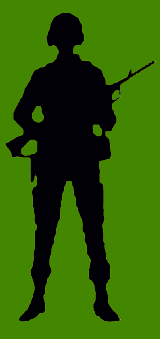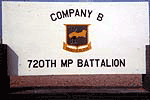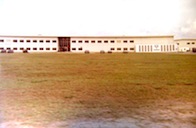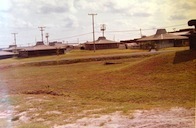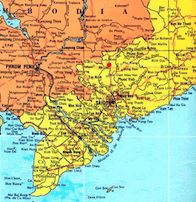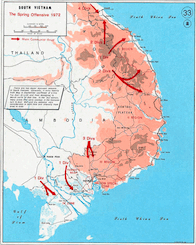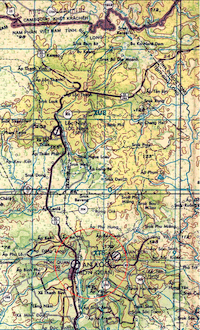However, the biggest battle was fought in Military Region III at An Loc where the ARVN defenders, their families, and the American advisors were surrounded and threatened with annihilation from NVA divisions that attacked from across the nearby Cambodian border.
All along the communist fronts intensive bombardments of U.S. B52 Arc Light
missions and close support tactical strikes of American fighter planes
destroyed much of the NVA armor and artillery along with their ability
to resupply which forced the North Vietnamese troops to retreat in defeat.
B Company began ammunition resupply convoy escorts from Long Binh Post to Lai Khe during the Communist Easter (Spring) Offensive. The number and frequency of the escort duties were regulated by the enemy activity during the offensive and were rotated between all companies who also conducted civilian refugee escorts to Vung Tau, B Company also received permission to dismantle unused Adams Huts on Long Binh Post and transport them for refugee housing along with food supplies and medical provisions
."NVA tanks, refugees and other problems" March-April-May 1972
We rotated the duty for the Lai Khe ammunition convoy escorts between the companies. At times it was as needed and when you could see the NVA T-55's (tanks) parked on Highway #13 between Lai Khe and the Thunders (Old 1st Infantry Base Camps between Lai Khe and the border) it got to be daily.
From the Easter offensive on everything moved south and east. 1LT Danny F. Dent, was the Battalion S-4. He had been a Rifle Platoon leader in the 101st. Airborne Division. One day, a college classmate of his, 1LT Griswold, and his Commanding Officer, a LTC showed up at our officers' hooch area driving a jeep and looking for a place to rest and get clean. They were the advisors to the ARVN Airborne at Da Nang which was in full retreat. Good soldiers with no supplies, no leadership, way out manned and gunned. They were enroute to Saigon to regroup at MACV. |

